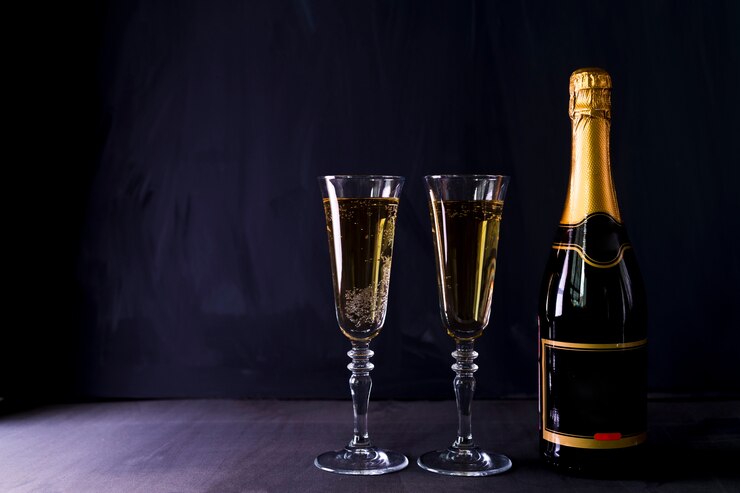Champagne, the effervescent elixir synonymous with celebrations and luxury, has a rich history and a complexity that goes beyond its bubbly exterior. From its origins in the Champagne region of France to the art of popping the cork, here are 10 essential things you should know about Champagne to enhance your appreciation of this iconic sparkling wine.
- Exclusive Origin:
True Champagne can only come from the Champagne region in northeastern France. The unique terroir, climate, and grape varieties (Chardonnay, Pinot Noir, and Pinot Meunier) contribute to the distinctive qualities of authentic Champagne. - Traditional Method of Production:
The majority of Champagnes are produced using the traditional method, also known as the méthode champenoise. This labor-intensive process involves a secondary fermentation in the bottle, which creates the signature bubbles. - Champagne Styles:
Champagne comes in various styles, each with its own characteristics. Non-vintage (NV) Champagnes blend wines from multiple years for consistency, while vintage Champagnes are made from grapes of a specific year. Rosé Champagne, made by incorporating red wine, offers a delightful spectrum of flavors. - Bubbles Size Matters:
The size of the bubbles in Champagne matters more than you might think. Smaller, finer bubbles are indicative of a higher quality Champagne, as they contribute to a more elegant and refined effervescence. - Aging Potential:
Champagne has exceptional aging potential. While non-vintage Champagnes are typically enjoyed shortly after purchase, vintage Champagnes and certain prestige cuvées can age gracefully for decades, evolving in complexity and character. - Sweetness Levels:
Champagnes come in a range of sweetness levels, from bone-dry to sweet. The terms to look for on the label include Extra Brut (very dry), Brut (dry), Sec (slightly sweet), and Demi-Sec (sweet). Brut is the most common style. - Opening Champagne:
The art of opening a bottle of Champagne is known as sabrage, where the cork and the top of the bottle are removed with a well-aimed swipe of a saber. While this is an impressive and celebratory method, most people prefer the controlled and classic pop achieved by twisting the cork gently while holding the base of the bottle. - Champagne Glass Matters:
The shape and size of the glass can significantly impact your Champagne experience. Flute glasses help retain the bubbles, preserving the effervescence, while wider tulip-shaped glasses allow for a better appreciation of the aromas and flavors. - Champagne and Food Pairing:
Champagne’s versatility extends to food pairing. Its high acidity and effervescence make it an excellent companion for a variety of dishes, from oysters and seafood to fried chicken and even certain desserts. Experiment with pairings to discover your preferences. - Sustainable Practices:
Many Champagne houses are embracing sustainable and eco-friendly practices in their vineyards and production processes. Look for labels indicating sustainable, organic, or biodynamic practices, as the industry becomes increasingly conscious of its environmental impact.
Beyond its association with celebrations, Champagne is a complex and fascinating wine with a rich tapestry of history, production methods, and styles. Whether you’re a seasoned Champagne enthusiast or a curious newcomer, these 10 insights will deepen your understanding and enhance your enjoyment of this iconic sparkling wine. So, the next time you raise a glass of Champagne, savor not only the bubbles but also the centuries-old craftsmanship and passion that go into each effervescent drop. Cheers!








